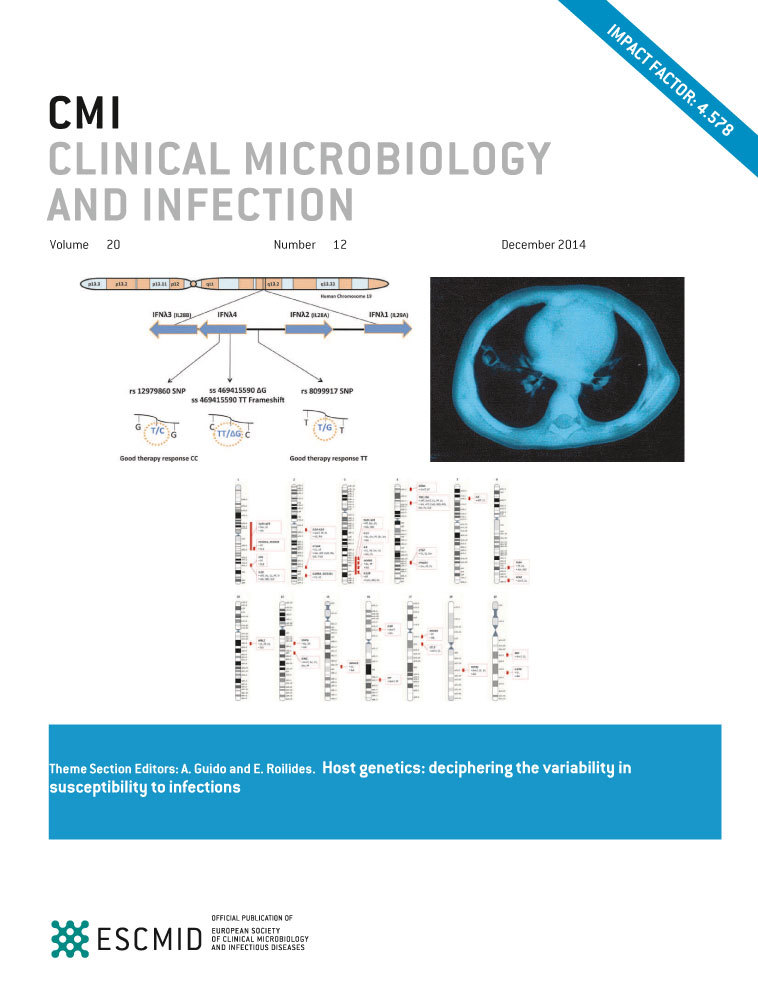First report of vancomycin-resistant Enterococcus faecium isolated in Poland
During the last decade, Enterococcus has evolved as one of the most significant nosocomial pathogens, particularly as an etiologic agent of nosocomial bloodstream infections [1, 2]. The increase in incidence of entero-coccal infections is a consequence of their broad natural and acquired resistance to antimicrobial agents, several different reservoirs of resistant strains, and, in particular, the acquisition of resistance to the glycopeptides, sometimes leaving no therapeutic options in seriously ill patients [3].
The first clinical isolates of vancomycin-resistant enterococci (VRE) were discovered in 1986 by Leclercq et al in France [4] and by Uttley et al in the UK [5]. Both outbreaks involved both Enterococcus faecalis and E. faecium, and the strains demonstrated high-level resistance to vancomycin and teicoplanin.
Four phenotypes of vancomycin resistance. VanA, VanB, VanC and VanD, have been reported. Genes determining the VanA and VanB phenotypes are usually located on transposons that are often plasmid-mediated. and their expression is inducible. The VanC type of resistance is a natural feature of E. gallinarum and E. casseliflavus. Recently, a new glycopeptide resistance phenotype, VanD, was described in E. faecium [6–8].
There were no reports of VRE in Poland up to the end of 1996, when the first strain was isolated from the urinary tract of a patient on the hematology ward of Gdansk Medical University (data not published). At the beginning of 1997, VRE were isolated from three patients hospitalized in the same department. The present paper describes characteristics of these first isolates.
Two of the patients suffered from acute myelo-blastic leukemia, and one from chronic myeloblastic leukemia. All three received multiple courses of antibiotics, including glycopeptides, as a result of several febrile episodes. In two of the cases, VRE were isolated from blood, feces and vaginal swabs (the latter two indicating colonization). The third patient was only colonized with VRE in the gastrointestinal tract (stool specimen positive for VRE).
The isolates were first identified as vancomycin-resistant E. faecium in the Department of Clinical Bacteriology, Clinical Hospital No. 1 in Gdansk and were sent to the National Reference Center for Antibiotic Resistance in Bacteria in the Sera and Vaccines Central Research Laboratory for further investigation. Identification to the genus level was carried out according to the criteria of Facklam and Collins [9], and the species were identified using the rapid ID32 Strep system (bioMérieux, Marcy I/Étoile. France). All isolates were confirmed to be E. faecium.
Minimum inhibitory concentrations (MICs) were determined by a standard agar dilution procedure according to the criteria recommended by the National Committee for Clinical Laboratory Standards (NCCLS) [10]. The antimicrobial agents tested were penicillin, ampicillin, chloramphenicol, ciprofloxacin. tetracycline, streptomycin, gentamicin, vancomycin and teicoplanin. The results of the susceptibility testing are listed in Table 1.
| Antibiotics | Isolate 1(1639) | Isolate 2(1640) | Isolate 3(1641) |
|---|---|---|---|
| Penicillin | >512 | 128 | 256′ |
| Ampicillin | >256 | 32 | >256 |
| Tetracycline | 0.25 | 64 | 64 |
| Streptomycin | 1024 | >2048 | >2048 |
| Gentamicin | 16 | 2048 | 2048 |
| Ciprofloxacin | 128 | 128 | 128 |
| Chloramphenicol | 4 | 8 | 4 |
| Teicoplanin | 32 | 64 | 16 |
| Vancomycin | 256 | 512 | 256 |
The presence of van genes was detected by PCR with primers specific for vanA, vanB and vanC genes [11, 12]. The vanA gene was identified in all strains analyzed (Figure 1). The isolates were typed by genomic DNA restriction fragment length polymorphism (RFLP) analysis using SmaI restriction enzyme and a CHEF DRII (BioRad) apparatus for PFGE [12] and by randomly amplified polymorphic DNA (RAPD) analysis using ERIC1 and AP4 primers [13] (2, 3).
RAPD products obtained in PCR reactions using ERIC1, AP4 and ERIC1/AP4 primers. Molecular size markers are indicated (S1,λ/BstEII; S2, pBR 322/MspI). Lane 1, isolate 1 (1639); lane 2, isolate 2 (1640); lane 3, isolate 3 (1641).
Pulsed-field gel electrophoresis of Bg/II-digested chromosomal DNA from E. faecium isolates. Molecular masses (in kilobases) were obtained from bacteriophage DNA concatamers (S). Lane 1, isolate 1 (1639); lane 2, isolate 2 (1640); lane 3, isolate 3 (1641).
Products of specific PCR amplification of vanA gene. Molecular size markers are indicated. (S1,λ/BstEII; S2, pBR 322/MspI). Lane 1, glycopeptide-susceptible E. faecium BM4147-1; lane 2, glycopeptide-resistant E. faecium BM4147; lane 3, isolate 1 (1639): lane 4. isolate 2 (1640); lane 5, isolate 3 (1641).
All three E. faecium isolates were found to harbor the vanA gene but were genetically unrelated as shown by both PFGE (with greater than six bands difference) and RAPD (different patterns). Further studies are needed in order to identify the source of VRE and the routes of their spread among patients. Broad infection control measures were proposed for implementation in the hospital to limit the spread of VRE.
It is well known that enterococci constitute a large reservoir of resistance genes. This first report of VRE in Poland may indicate the potential risk of transferring high-level vancomycin resistance to other more virulent nosocomial pathogens, thus calling for more stringent control over antibiotic usage and for careful monitoring of this emerging resistance among enterococci in our country.




